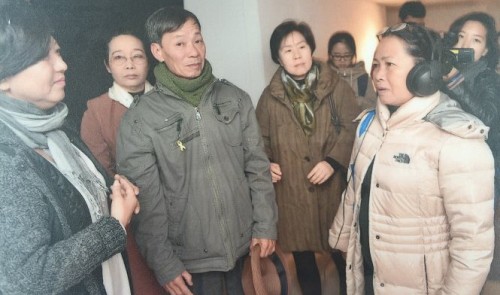Those who survived mass killings committed by South Korean troops in Vietnam around 50 years ago have been tirelessly seeking recognition for the tragic ordeal and its deceased victims.
Nguyen Tan Lan, now 65, a survivor of the Binh An massacre in Tay Son District in the south-central province of Binh Dinh five decades back, has made narrating the stories of massacre victims the last mission of his life.
The man, who sustained multiple grenade wounds on his legs, later joined the army.
Other survivors have also felt the urge to unravel the untold stories.
Truong Thi Thu said that several years ago, a group of foreigners paid a visit to her neighborhood for information on the dreadful Ha My mass killing in Dien Ban District, located in the central province of Quang Nam.
She spent one hour recounting the ordeal, insisting no one interrupt her.
The 78-year-old woman, who had five of her toes torn off and sustained multiple wounds to her body, said she was overcome with emotions from torturous flashbacks of the bloodbath which killed 12 people in her husband’s extended families.
Lan and another survivor, Nguyen Thi Thanh, embarked on a tale-telling mission to South Korea in 2015, during which they revealed shared stories of their ordeal to different forums throughout the county.
Thanh, a survivor of the Cay Da Du massacre in Dien Ban, was left with most of her breast flattened.
Similarly, Trinh Thi Nam, now 75, was fortunate enough to cheat death in the Nhon Phong mass slaughter in An Nhon Town in Binh Dinh.
Though she suffers violent headaches when recounting her traumatic memories, Nam still chooses to share her story.
The woman finds speaking out a soothing outlet for the long-suppressed grief over the loss of her child to the nightmarish experience.
Even Doan Duc, a man of few words and a victim in the Duy Trinh massacre in Duy Xuyen District, Quang Nam, distinctly remembers the ordeal, which he says plays on-loop in his head.
Yearning for connection
Most survivors across the central region have yet to meet each other and many merely keep in touch with only those who made it out alive from the same massacres.
Even more heartbreaking, many are unaware of similar mass killings perpetrated in neighboring districts.
Those who are aware are enthusiastically supportive of the idea of get-togethers between victims that could help them learn how other survivors are getting by.
None, however, are capable of organizing such a gathering.
Nguyen Dang Vu, director of Quang Ngai Province’s Department of Culture, Sports and Tourism, finds the idea of reunions a rewarding opportunity for survivors to rewind an unforgettable chunk of their lives.
Researchers also pool historical evidence on the mass killings, which have gone largely ignored at similar meetings.
Vu stressed that the task needs close coordination from the administration of the provinces involved and other relevant departments.
He hopes to have a get-together planned for later this year in commemoration of the 50th anniversary of the massacres.
Vu added that the planned meeting, however, will gather some representatives of the slaughters in each province to start with, before assembling more of them later, as official statistics on the actual number of survivors have yet to be released so far.
According to Van Thi Kim Nhung, an official in Tay Son District, Binh Dinh, and current deputy of the provincial People’s Council, at a meeting last year Lan called for the provincial administration’s proposal to the Vietnamese government, demanding that its South Korean counterpart perform three acts as consolation for victims of the Binh An massacre.
These acts include an official apology to the Vietnamese people for the atrocious war crimes committed by South Korean troops during the war in Vietnam and taking responsibility for survivors and the deceased victims’ families.
“We have recorded and submitted all of Lan’s suggestions to the provincial People’s Council, and they were then forwarded to relevant agencies and the provincial People’s Committee,” Nhung said.
Thanh has grown concerned that the agonizing experiences will fall into oblivion after she and other survivors pass away.
|
Unforgivable crimes Kim Jin Sun arrived in Phu Cat District, Binh Dinh, in December 1969 as an infantry captain in the South Korean army. He retired with the rank of General. Kim wrote in his war memoir that his comrades during the war in Vietnam founded a club and meet on a biannual basis. During their reunions, war memories, ranging from dense jungle experiences to deadly moments, come flooding back and never lose heat. “Whenever they discuss me, everyone rambles with great excitement,” he added. “I just keep silent and hold back my agonizing torment and repentance at our unforgivable war crimes and haunting memories,” Kim wrote. |






















































